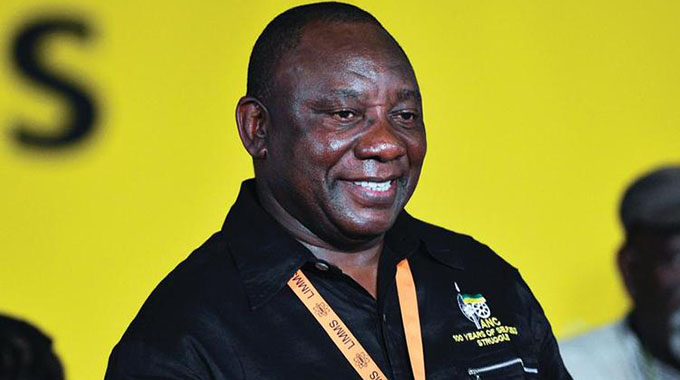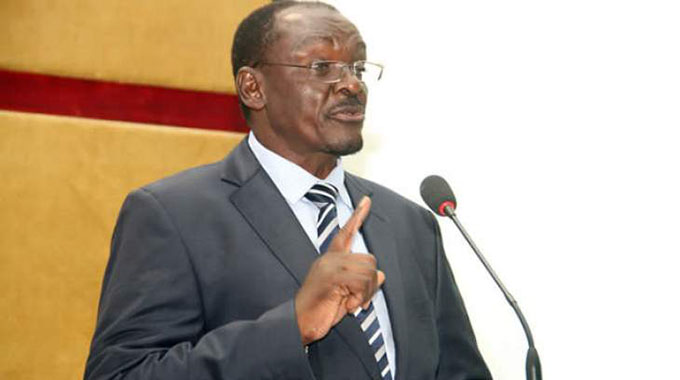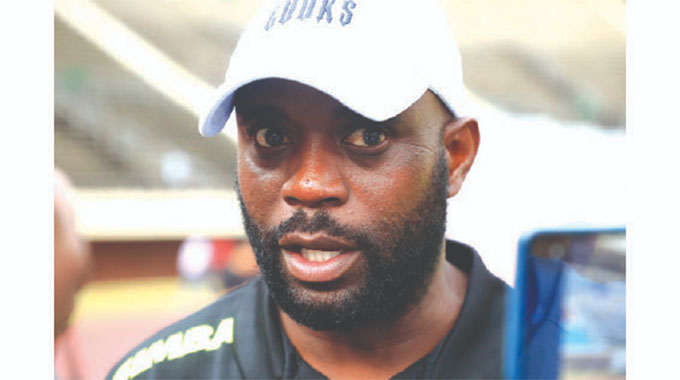PELE’S ARRIVAL, GAZZA’S TEARS, THERE WAS A TIME UMBRO WAS FASHIONABLE . . . back in the days when even it felt romantic to give Gift Muzadzi his Umbro nickname

IT has been quite a dramatic few days — the SuperSport bosses axed Robert Marawa through a text message, Bulawayo Chiefs won a league match and anger raged in the domestic football constituency over the Umbro kit the Warriors will use at the AFCON finals.
We will deal with Marawa’s bombshell in due course, possibly next week, Bulawayo Chiefs will win again, without a doubt, and that leaves us, for now, to deal with the rejection Umbro has suffered.
Well, as we deal with the present, let us first take a journey into the past.
In four years’ time, Umbro will mark their Centenary, celebrating 100 years since a young English tailor, Harold Humphrey, founded the firm in the back room of a bar in Wilmslow, Cheshire, just about 10km outside Manchester.
By some divine coincidence, it was also the same year Wembley opened its doors to the public, for the first time, when it hosted the FA Cup final between Bolton Wanderers and West Ham.
Umbro was founded a year before Adidas arrived when Adolf “Adi’’ Dassler created his sportswear firm in Herzogenaurach, a town in the Bavaria area of Germany, which still remains the home of the iconic brand with the three stripes.
Incredibly, Adidas is now a company worth more than US$12 billion and it’s hard to imagine that, back in 1924, when Adolf was joined at the firm by his brother, Rudolf, they used to generate power from a stationary bicycle to run their equipment because of inconsistent electricity supplies.
Two years after Adidas’ arrival, Highlanders were established.
And the club, whose best kits have been the Adidas strip, arrived in a world where Umbro, then just a three-year sporting brand, were still making their first baby steps into a game that was very different from what it has become today.
A world where Huddersfield Town, who finished bottom of the English Premiership this season, were the champions that year.
A world where Manchester City, crowned English champions this year, were relegated that year in 1926 after finishing second from the bottom-of-the-table, where Aston Villa thrashed Burnley 10-0 on April 29, the same Burnley who had humiliated Birmingham City 7-1 three weeks earlier.
A world where Sheffield United, who will play in the Premiership next season, shared 13 goals with Cardiff in one league game, on New Year’s Day, with the Blades — a team that would one day field Bosso’s greatest ever player, Peter Ndlovu, in their ranks — winning that match 11-2.
A world where Chelsea, who could well win the Europa League this year, finished third in the Second Division, Wolves finished fourth, Southampton 15th and Fulham 19th in that second-tier of English football.
But, the more things change, the more they also stay the same.
And, Juventus, who won the Italian Serie A this year, were also champions of Italy back in 1926, Celtic, who won this year’s Scottish title, were also champions of Scotland back in 1926.
By the time Uruguay won the first World Cup in 1930, the South American country — who have four stars on their jerseys, despite winning twice in this tournament because FIFA acknowledged that their Olympic Games gold medals in 1924 and 1928 were also world titles — they did so in an Umbro kit.
It represented a milestone moment for Umbro and, in the following years, they went from strength to strength:
- When Pele introduced himself to the football family, as a mere 17-year-old at the 1958 World Cup finals in Sweden, he was wearing an Umbro shirt for the Brazilians.
- When England won their only World Cup on home soil in 1966, they did so using the Umbro kit and their captain, Bobby Moore, displaying the trophy at Wembley, has remained one of the defining images of the game.
- Such was the power of the romance between Umbro and international football that, at the 1966 World Cup, 15 out of the 16 participating countries were all kitted by Umbro.
- For England, it was a great romance, which started in 1954 and, while Admiral kits were used periodically between 1974 and 1984, would hold out until 2012.
- When Stanley Matthews starred in the unforgettable 1953 FA Cup final between Blackpool and Bolton Wanderers at Wembley, the irresistible winger paraded all his skills wearing an Umbro jersey.
- When Celtic became the first British club to be crowned European champions in 1967, the Glasgow giants were wearing an Umbro kit and, the following year, Manchester United grabbed the same trophy in an Umbro kit.
But, nothing lasts forever, in football, just like in life.
A BRAND WITH A RICH PAST,
BUT AN UNCERTAIN FUTURE
In 2008, Umbro turned 85, but it proved a defining year for the company, already pushed into the shadows of the big boys like Adidas and Nike, and a £377m deal saw it being acquired by the American firm.
Five years later, even their flagship client, England, could not keep walking with them and a 2014 World Cup qualifier against San Marino marked the last time the Three Lions featured in a competitive game in an Umbro kit.
A £20m-a-year deal, which was supposed to run for nine years, was abandoned after just four years as it became clear between the two parties that things had changed.
And, at the last World Cup, it became apparent Brand Umbro — which had 85 percent of the market 52 years ago at the ‘66 World Cup — had been pushed into the shade.
Adidas dominated the landscape with 12 teams — (Germany, Russia, Argentina, Belgium, Colombia, Japan, Mexico, Spain, Morocco, Egypt, Iran, and Sweden).
Nike were not further behind and had 10 teams, including the eventual winners France and losing finalists Croatia, with England, Poland, Portugal, Brazil, South Korea, Saudi Arabia, Australia, and Nigeria completing their stable.
Puma had just two with Uruguay and Switzerland, New Balance also had two in Costa Rica and Panama while Errea had one in Iceland, Hemmel were represented by Denmark, Ramai by Senegal and Uhlsport by Tunisia.
Umbro also had just one team, Serbia, wearing their kit at the World Cup last year.
It’s an age where kit matters and they even have polls in newspapers and online about who is wearing the best, and worst kit, with Nigeria’s eccentric Nike home kit being voted the best at the last World Cup.
It’s a measure of the importance of kits these days that the country has been in conversation with itself, since last Thursday when the Umbro kits for the Warriors were unveiled, amid an outpouring of raw emotions.
There is a side that strongly believes the kits represent a journey back into the past, a step into the wilderness and an insult to their proud identity as a people, and as a nation.
They argue, with both passion and anger, that those who designed the kits didn’t apply themselves fully to their assignment with others even accusing them of just going on their shop shelves and picking colours that would fit those used by the Warriors.
They say this was shoddy workmanship, without any respect whatsoever to what the Warriors represent, without any creativity to capture the never-say-die spirit our boys have been displaying in abundance in these trenches.
And, some even claim the kits are, at best, lifeless, and at worst, useless.
Others even claim Umbro might have thought they were making kits for the Copa Coca-Cola schools football tournament, for the likes of Pamushana, Manunure, Mutare Boys High, Guinea Fowl, Pfupajena, Rujeko and Mzilikazi High School, instead of a team that will feature in the first 24-team AFCON finals.
THE FANS ARE RIGHT, THEY
ARE ALWAYS RIGHT, BUT . . .
There is something about fans, for all their obsession with being driven by emotions, that we can’t dispute — their knowledge of football, of what is good in the game and what is bad, of what is quality and what is quantity, of what is beautiful and what is ugly.
So, when they react, as they have done, in a universal rejection of the Umbro kit for the Warriors, they are doing it not because they have an axe to grind with the British sportswear firm, or because they don’t trust the men and women who have been thrust into the game’s leadership, but because they genuinely believe they have not been given a fair deal.
Their voices are the voices of reason, the voices of logic, the voices of sense, the voices of sanity and, after all, since 1709, we have been told, Vox Populi, Vox Dei, which, in Latin, means the voice of the people is the voice of God.
They have an enduring love for their Warriors, the only team they all collectively call theirs, the only team that brings down the artificial barriers that demarcate our clubs into warring factions and unite them into one family, bonded by a similar cause, united by a similar mission.
The only team that belongs to them, unlike the clubs which belong to certain individuals — whether they are businessmen like Farai Jere or Nhamo Tutisani — or religious leaders, like Prophet Walter Magaya, or organisations like the platinum and coalmines, and the only team whose connection with them came on the day they were born.
They didn’t have to choose to be Warriors fans, it came by divine design.
It’s that special love affair, where they rightly believe that a raw deal for their Warriors, which they feel is the case in this Umbro kit, is also a raw deal for them, which has triggered all that fury, not out of hate for Umbro, but out of love, and respect, for their national team.
It happens everywhere and, only three months ago, the Barcelona board were handed a Nike kit which was predominantly white, very beautiful and very innovative, but they couldn’t accept it because they felt the dominant white colour would be rejected by their fans.
The reason?
It was the colour more associated with their biggest rivals Real Madrid and, for all the beauty and style of the Nike kit, they simply rejected it.
But, kits don’t play football, players do, and even if the Warriors were to have the best possible kit in Egypt, and lose all three matches, no one would remember that they were the most fashionable side at the AFCON finals because, in this game, results matter far more than style.
That is why it’s important that all this madness about this Umbro kit should not distract us from the main mission, which is to do well at the next AFCON finals, should not fool us to take our eyes off the ball and should not be the dominant narrative in our game when we have such a huge assignment on the horizon.
This Umbro kit should not be allowed to divide us, when we need unity like never before, should not be allowed to poison our football landscape, when we badly need tranquillity for our players to prepare for the big assignment without carrying unnecessary baggage.
And, we should not allow it to be abused by vultures, with their sinister hidden agendas, who have been waiting on the wings to preach their gospel of hate.
Yes, this kit isn’t what we expected, isn’t what we would have wanted, isn’t what we would have chosen, but there is a bigger issue at stake — and that is ensuring the Warriors do better, at the AFCON finals, than they have ever done at the tournament in their history.
No one will remember whether our kit was bad or good, if we go on to win the AFCON title in the coming weeks because, that’s what matters, that’s what football teams are created for, not to be the most stylish like they are some fashionistas, but to be winners, on the field, like the irresistible Manchester City.
The same Citizens who, when they ended 44 years of waiting for the league championship in 2012, were wearing the Umbro kit.
Very few even remember that Johan Cruyff refused to wear the Dutch Adidas jersey at the 1974 World Cup final because he was sponsored by Puma.
Only a few even remember that the Dutch FA buckled under pressure from their star player and came up with an alternative kit, for him only, with just two, instead of three stripes, while his teammates all used the Adidas kit with the three stripes.
Wonder why very few remember that?
Well, it’s because that Dutch team went all the way to final where they eventually lost to the hosts Germany and their football success story, and not their kit, is what remains the enduring tale of what they did there.
That, and not the quality, or lack of quality, of our kit, should be our focus right now.
To God Be The Glory!
Come on Warriors!!!!!!!!!!!!!!!!!!!!!!!!!
Khamaldinhoooooooooooooooooooo!
Text Feedback — 0772545199
WhatsApp — 0772545199
Email — [email protected]; [email protected]
You can also interact with me on Twitter — @Chakariboy, Facebook, Instagram — sharukor and interact with me every Wednesday night, at 9.45pm, when I join the legendary Charles “CNN’’ Mabika and producer Craig “Master Craig’’ Katsande on the television magazine programme, Game Plan.










Comments